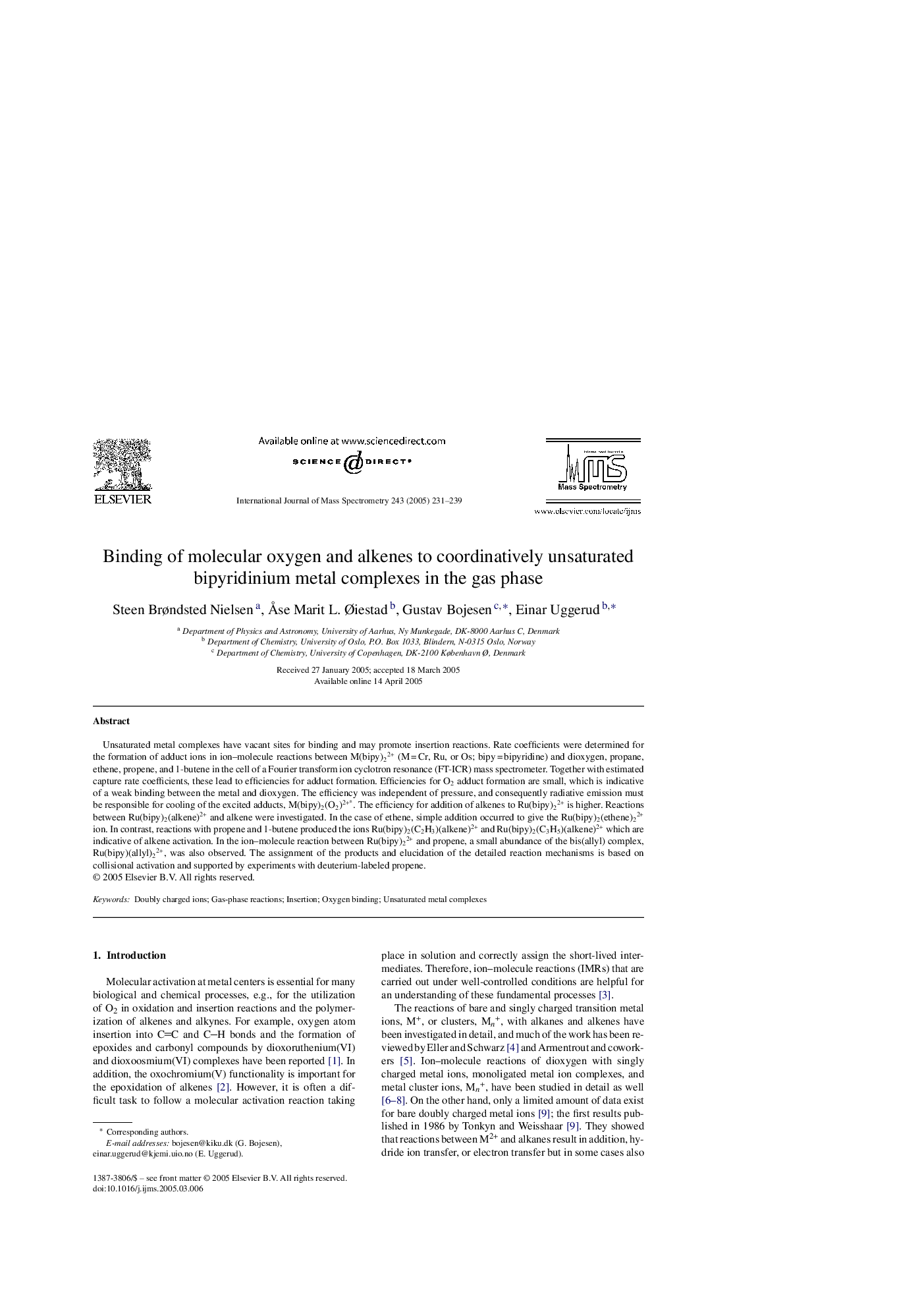| Article ID | Journal | Published Year | Pages | File Type |
|---|---|---|---|---|
| 9746670 | International Journal of Mass Spectrometry | 2005 | 9 Pages |
Abstract
Unsaturated metal complexes have vacant sites for binding and may promote insertion reactions. Rate coefficients were determined for the formation of adduct ions in ion-molecule reactions between M(bipy)22+ (M = Cr, Ru, or Os; bipy = bipyridine) and dioxygen, propane, ethene, propene, and 1-butene in the cell of a Fourier transform ion cyclotron resonance (FT-ICR) mass spectrometer. Together with estimated capture rate coefficients, these lead to efficiencies for adduct formation. Efficiencies for O2 adduct formation are small, which is indicative of a weak binding between the metal and dioxygen. The efficiency was independent of pressure, and consequently radiative emission must be responsible for cooling of the excited adducts, M(bipy)2(O2)2+*. The efficiency for addition of alkenes to Ru(bipy)22+ is higher. Reactions between Ru(bipy)2(alkene)2+ and alkene were investigated. In the case of ethene, simple addition occurred to give the Ru(bipy)2(ethene)22+ ion. In contrast, reactions with propene and 1-butene produced the ions Ru(bipy)2(C2H3)(alkene)2+ and Ru(bipy)2(C3H5)(alkene)2+ which are indicative of alkene activation. In the ion-molecule reaction between Ru(bipy)22+ and propene, a small abundance of the bis(allyl) complex, Ru(bipy)(allyl)22+, was also observed. The assignment of the products and elucidation of the detailed reaction mechanisms is based on collisional activation and supported by experiments with deuterium-labeled propene.
Related Topics
Physical Sciences and Engineering
Chemistry
Analytical Chemistry
Authors
Steen Brøndsted Nielsen, Ã
se Marit L. Ãiestad, Gustav Bojesen, Einar Uggerud,
